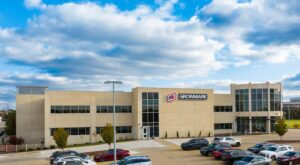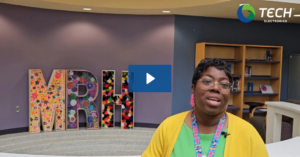The Center for Homeland Defense and Security (CHDS) recently released a database of statistics and documentation of every instance that a gun has been active on a school campus between 1970 and 2018. The results are incredibly eye-opening and alarming. We’ve seen more school shootings incidents this year alone than any other in US history and we still have 2 months remaining.
I currently have children attending school from pre-k to high school, even though additional measures are being taken to prepare students for an active shooter, their safety is a constant worry of mine. They’ve been instructed on essential procedures to help protect themselves from an intruder: turn off lights and lock doors, remain quiet, avoid cell phone use to keep lines open for emergency responders, and so much more. Teachers have been trained on how to react and provided additional tools to barricade doors or shield students.
Although I welcome the initiative taken by school districts like ours around the country, I know that there’s a better way.
Security in schools should be proactive. When we have the ability to detect a threat, identify the threat, pinpoint their exact location, and immediately alert the authorities, we can gain precious minutes wherein lives can be saved and devastating tragedies can be avoided.
The advent of artificial intelligence (AI) has made this technology a reality that can be implemented in our schools allowing us to prevent rather than react. These advanced security platforms have the ability to respond based upon on a set of pre-determined perimeters. Additionally, the intelligence is moving towards having the ability to recognize human interactions or signals that could indicate a potential threat, such as a fight or hands being raised in the air.
The Best Way
Again, referencing the aforementioned analysis from the CHDS, it’s important to outline three other important statistics:
- Since 1970, over 53% of school shooters were currently enrolled
- In the reported 1300 incidents of K-12 school shootings, 87% involved only one
- Nearly 70% of these incidents occurred at high schools.
It’s also important to note that school shootings more commonly occur in suburban and rural areas. Of the 10 deadliest shootings, all but one took place in a town of less than 75,000 residents; the majority took place in cities with less than 50,000.
It is simply not enough to only have plans for reaction; schools across the country have started utilizing methods of even earlier detection. Identifying students that are at risk, bullied, those with negative home lives, or struggle with mental illness, and offering them the support and guidance that they need before it results in violence.
Assessment: Ensure that school staff understands signs of potential distress in a student and has a plan in place to report and react.
Awareness: AI has made it easier to for schools to monitor social media for potential threats or to identify bullies or those being bullied.
Notification: Offering an anonymous tip line that students can text or call if they suspect a fellow student is having difficulty, mentioned something, etc.
There are options in mitigating the risk and preventing acts of violence within our schools. If you would like to learn more about the technology that is being developed to aid in this mission, feel free to contact me.



